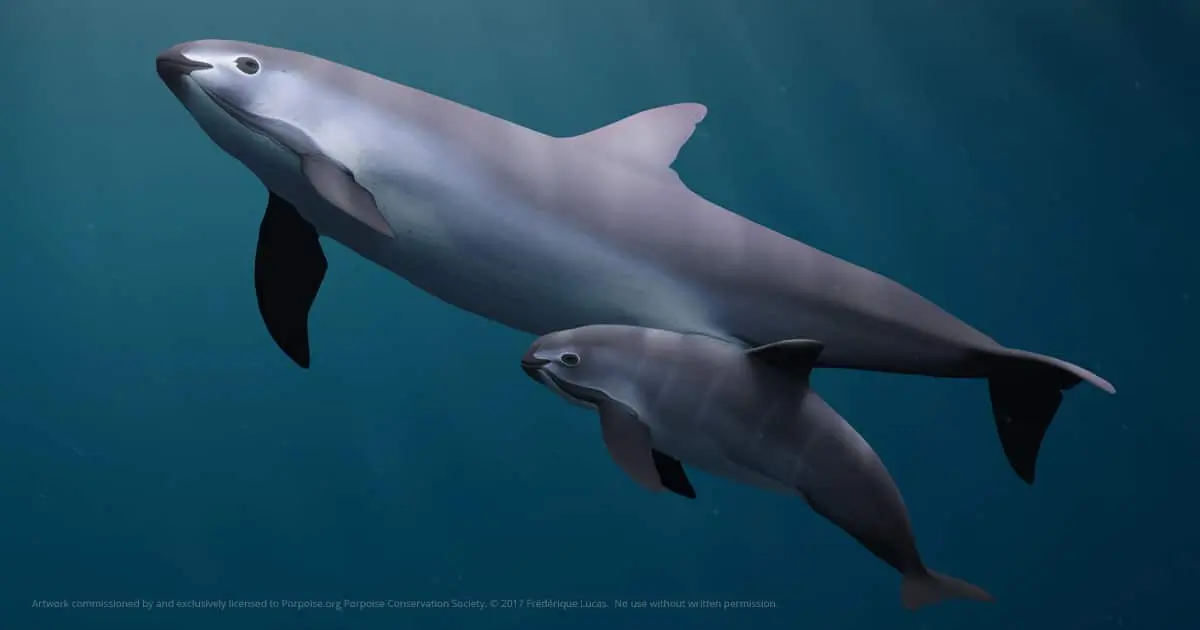Endangered Species: Vaquita
According to the World Wildlife Fund, the Vaquita is the world's rarest marine animal with about 10 individuals left and they are listed as critically endangered by the IUCN Red List since 1996. They were first discovered in 1958 and still live in the small area in the North of the Gulf of California, known as the Sea of Cortez. Their habitat encompasses about 1500 square miles of ocean, which is smaller than any other cetacean. The Porpoise Conservation Alliance wrote that the population of the Vaquitas in 1997 was about 600 and in 2008 it was about 245, but it decreased by 90% from 2011 to 2016. These rare porpoises are sometimes found close to shore but are known for being shy and swim away at the approach of boats. According to the Center for Biological Diversity, Vaquitas prefer warm, clouded waters between 30 and 90 feet deep and less than 16 miles from shore where there are strong tidal mixing and high food availability. They are able to survive extremely shallow bodies of water and large temperature fluctuations, and they are mostly sighted near the Rocas Consag archipelago near the Colorado River Delta.
 |
| Full-grown Vaquita and her calf. Source: porpoise.org |
 |
| Vaquita ensnared in a gill net. Source: savethewhales.org |
Taxonomy:
Domain: Eukarya
Kingdom: Animalia
Phylum: Chordata
Class: Mammalia
Order: Artiodactyla
Suborder: Odontoceti
Infraorder: Cetacea
Family: Phocoenidae or Porpoise
Genus: Phocoena
Species: Sinus
Why are Vaquitas critically endangered? The decrease of the population has increased significantly due to illegal fishing with gill-nets to catch the also critically endangered Totoaba. The Totoaba is a rare fish captured for its swim bladder, considered a delicacy with supposed medicinal value in China. Both marine animals were listed as endangered by the 1970s. According to the World Wildlife Fund, international trade of threatened species including the Totoaba was banned under the global agreement known as CITES, but fishermen continue to smuggle it out since they get $4000/lb which is half of the annual income from legal fishing. Frequently, animals such as the Vaquita will get caught on the nets that are set for the Totoaba and are unable to surface for air. That animal will then drown, or if it is able to get free, will have severe injuries. According to the Porpoise Conservation Alliance, more than 300,000 cetaceans get entangled in fishing nets every year, and according to Save the Whales, between 39 and 84 Vaquitas are killed by gill-nets annually. Vaquitas are also threatened by bycatch by legal commercial shrimp trawlers, coastal development in Vaquita habitat, water pollution, and lack of genetic variability. In addition, the damming of the Colorado River drastically decreases the amount of freshwater flow in the Vaquita's habitat.
 |
| Two Vaquitas were sighted catching a breath. Source: porpoise.org |
What is being done to keep the Vaquitas from extinction? Conservation organizations agree that the best way to save them is strict enforcement of a ban on gill-net fishing in the Sea of Cortez as well as putting an end to the illegal trade of the Totoaba. According to the Porpoise Conservation Alliance, The Mexican government announced a 2-year ban on gill-net fishing in the Vaquita's habitat in April 2015. Additionally, in July 2016, the gill-net fishing ban, and a ban on night fishing were made permanent, and refuge areas were increased in 2018. WWF started working to collect abandoned gill nets as well as monitor current populations, and they created a committee to improve Vaquita-safe fishing techniques. According to the World Wildlife Fund, more the 400 "ghost" nets were removed from the water between October 2016 and July 2017. The International Committee for the Recovery of the Vaquita (CIRVA), continues to monitor and advise the continuing conservation efforts.
You can help save Vaquitas from extinction by donating to the following charities: